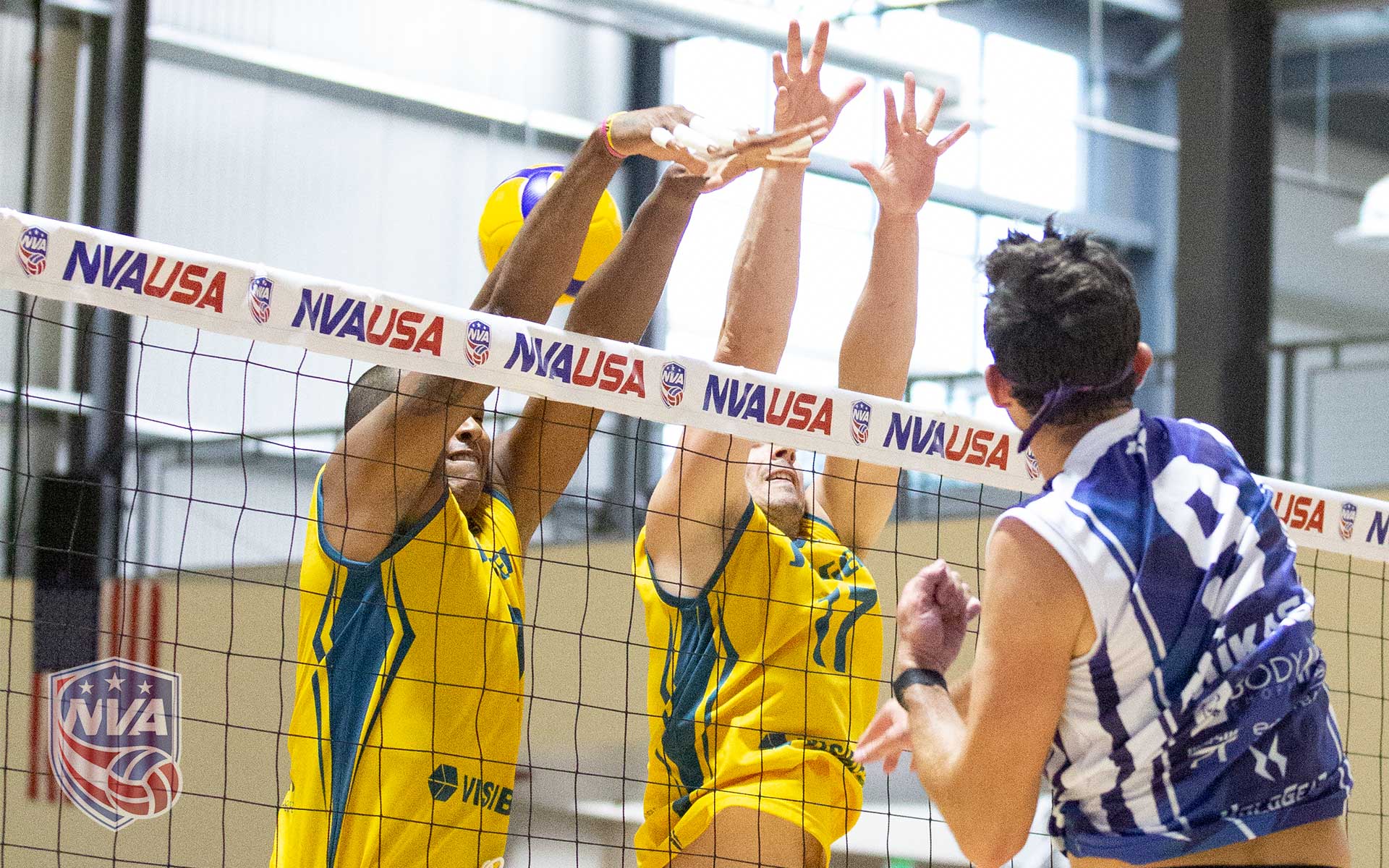As the National Volleyball Association prepares to announce two new teams (12 total) for the 2022 season, two critical questions come to mind. As the NVA attempts to establish a men’s professional volleyball league, where will the NVA find high-level volleyball players to fill the rosters?
Comparing the size of men’s college volleyball programs in the U.S. to basketball, football, and baseball, one might assume that there isn’t a large enough pool of talented players. The NFL, NBA, and MLB have a more extensive collection of college players to draft from their own country. College football has 130 Division I and 169 Division II college programs. College basketball with 350 Division I and 300 Division II. And College baseball 299 and 274. While in volleyball, there are only 23 NCAA Division I and 25 Division II colleges.
A unique difference between these sports programs is the maximum scholarship that Division I volleyball programs can provide. In basketball, the NCAA maximum scholarship limit is 13 for Division I and 10 for Division II. Football Division I gets 83 and Division II 36. Baseball Division I has 11 and 7. While volleyball only receives a maximum scholarship limit of 4.5 for both divisions. Because of this, many top talent players turn away from going to more expensive Division 1 programs without a scholarship and instead choose to compete for more affordable options.
So rather than only finding top players from Division II and II volleyball programs, there are tons more in other programs with Division III (107), NAIA (43), and Junior College (41). Therefore, the NVA has access to 239 volleyball programs with 2,868 players to recruit from each year.
There are currently about 136 professional volleyball players in the NVA’s ten-team roster. And they all represent volleyball programs from Division I, II, and III, junior colleges, NAIA, and club teams.
Division I colleges represented in the NVA are Long Beach State, UCLA, Hawaii, U.C. San Diego, Cal State Northridge, BYU, Ohio State, Penn State, U.C. Santa Cruz, Grand Canyon, IPFW, Sacred Heart, and California Baptist University.
Division II programs Concordia, McKendree University, Quincy University, George Mason, Lee McRae College, and King University.
Division III programs Elmira University, Juniata, Southern Virginia University, Stevens Institute of Technology, Eastern Mennonite, Lakeland University, Ramapo College, Kean University, Rutgers, Alvernia University, University of LaVerne, and Elms College.
Junior Colleges Golden West, Long Beach City, Orange Coast, Humber, Austin Community, and the University of Puerto Rico Carolina. In NAIA Hope International University, Westcliff University, Park University, Grand View University, Saint Javier University, Clarke University, Siena Heights, Benedictine, Graceland, Missouri Baptist
Then for club programs East Stroudsburg University, Robert Morris, Virginia University of Technology, University of Central Florida, Valencia College. West Virginia, Minnesota, Flori-da Atlantic, Spring Arbor, Oklahoma, Western Kentucky, University of North Texas, Texas State University, University of Texas Arlington, Angelo State University Texas, and Utah Valley.
The second question is, “Are these players talented enough to play at a professional level?” The answer is “Yes.”
In many ways, U.S. college programs are revered at the same caliber as other professional programs worldwide. Many of our college volleyball players have successful careers as top prospects in the utmost professional leagues in Europe, all the way from Division I to Junior colleges. The proof is in the number of players who graduate after college to play professional volleyball in other countries. And some of these players are on the NVA roster.
– Jorge Mencia played – China, Cuba, Indonesia, Lebanon, Puerto Rico, Qatar, Saudi Arabia, and Turkey.
– Inovel Romero – Lebanon, Bahrain, Puerto Rico, and France.
– Antwain Aguillard – Finland, France, Germany, Israel, Italy, and Romania.
– Brandon Rattray – Spain and Germany.
– Ryan Mather – Finland, Luxembourg, Denmark.
– Ryan Manoogian – Austria, Norway, Romania, and Finland.
– Matt Hilling – Austria, Netherlands, Sweden, Brazil, and Israel.
– Nick West – Austria, France, Germany, and Sweden.
– Nick Amado – Spain.
– Joey Jarvis – Germany and Israel.
– Shayne Beamer – Denmark and England.
– Corey Chavers – Italy, Sweden, and Indonesia.
– Josh Aysenberg – Israel.
– Pedro Nieves – Greece and Israel.
– Greg Faulkner – Peru, and Romania.
– Langston Payne – Greece.
– Kyle Dagostion – Slovenian.
– Joe Norman – Croatia, Belgium, and South Korea.
– Felix Chapman – France.
– Jake Langlois – Italy and Poland.
– Leo Durkin – Germany.
There is no doubt the professional volleyball talent pool in the NVA represents the best of the best in the USA. Every year, more players returning from abroad are eager to continue their professional careers close to home, increasing high-level competition within the NVA. Therefore, it’s time to support the growth of the professional men’s volleyball league, which will help create a professional pipeline for talented in the same manner as the MLB, NBA, and NFL.
As the league continues to grow, it will only be a matter of time before all of the U.S. Men’s Team will be playing on home soil. Then, even more international players will be eager to have the experience of living and playing in the United States, which has never been an option for them until now!
“Volley On With the NVA!”
– By NVA Staff Writer



Deprecated: parse_str(): Passing null to parameter #1 ($string) of type string is deprecated in /home/insatanity/public_html/stingers.nvausa.com/wp-content/plugins/jetpack/class.jetpack.php on line 3933
Deprecated: parse_str(): Passing null to parameter #1 ($string) of type string is deprecated in /home/insatanity/public_html/stingers.nvausa.com/wp-content/plugins/jetpack/class.jetpack.php on line 3933